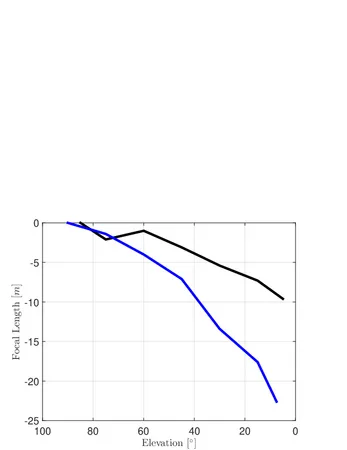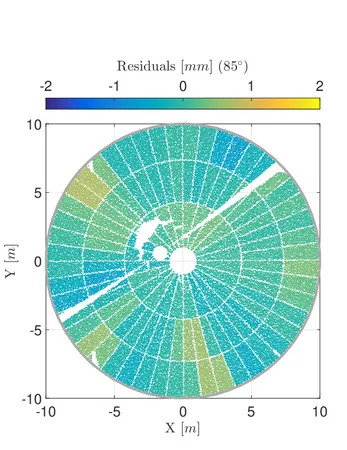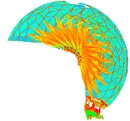For accurate astronomic and geodetic observations based on radio telescopes, the elevation-dependent deformation of the radio telescopes' main reflectors should be known. Terrestrial laser scanning has been used for determining the corresponding changes of focal lengths and areal reflector deformations at several occasions before. New in our research are several aspects:
- We mount the laser scanner upside-down in or close to the sub-reflector using a flexibel link to assure permanent overhead orientation,
- We minimize systematic measurement errors by an improved measurement: sampling the main reflector in both faces of the laser scanner and peforming special driving routines for steering the radio telescopes, and
- We calibrate the laser scanner in-situ in a bundle adjustment based upon an itnegrated data-processing concept.
This concept is applied to several radio telescope as
- Effelsberg 100-m radio telescope
- Onsala Space Observatory 20-m radio telescope
- Wettzell 20-m radio telescope.
Further telescopes are about to be analyzed.


